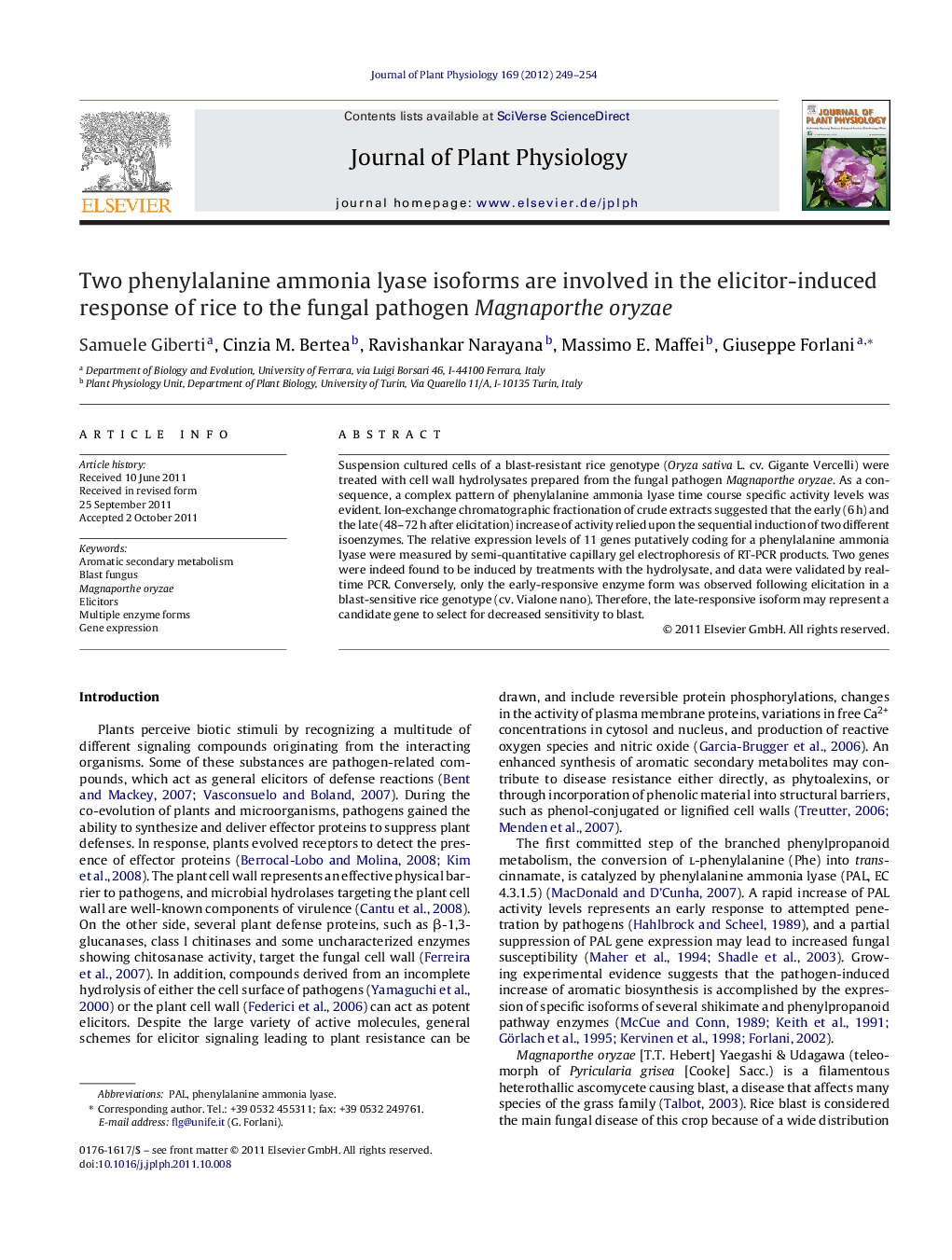| Article ID | Journal | Published Year | Pages | File Type |
|---|---|---|---|---|
| 2056453 | Journal of Plant Physiology | 2012 | 6 Pages |
Suspension cultured cells of a blast-resistant rice genotype (Oryza sativa L. cv. Gigante Vercelli) were treated with cell wall hydrolysates prepared from the fungal pathogen Magnaporthe oryzae. As a consequence, a complex pattern of phenylalanine ammonia lyase time course specific activity levels was evident. Ion-exchange chromatographic fractionation of crude extracts suggested that the early (6 h) and the late (48–72 h after elicitation) increase of activity relied upon the sequential induction of two different isoenzymes. The relative expression levels of 11 genes putatively coding for a phenylalanine ammonia lyase were measured by semi-quantitative capillary gel electrophoresis of RT-PCR products. Two genes were indeed found to be induced by treatments with the hydrolysate, and data were validated by real-time PCR. Conversely, only the early-responsive enzyme form was observed following elicitation in a blast-sensitive rice genotype (cv. Vialone nano). Therefore, the late-responsive isoform may represent a candidate gene to select for decreased sensitivity to blast.
